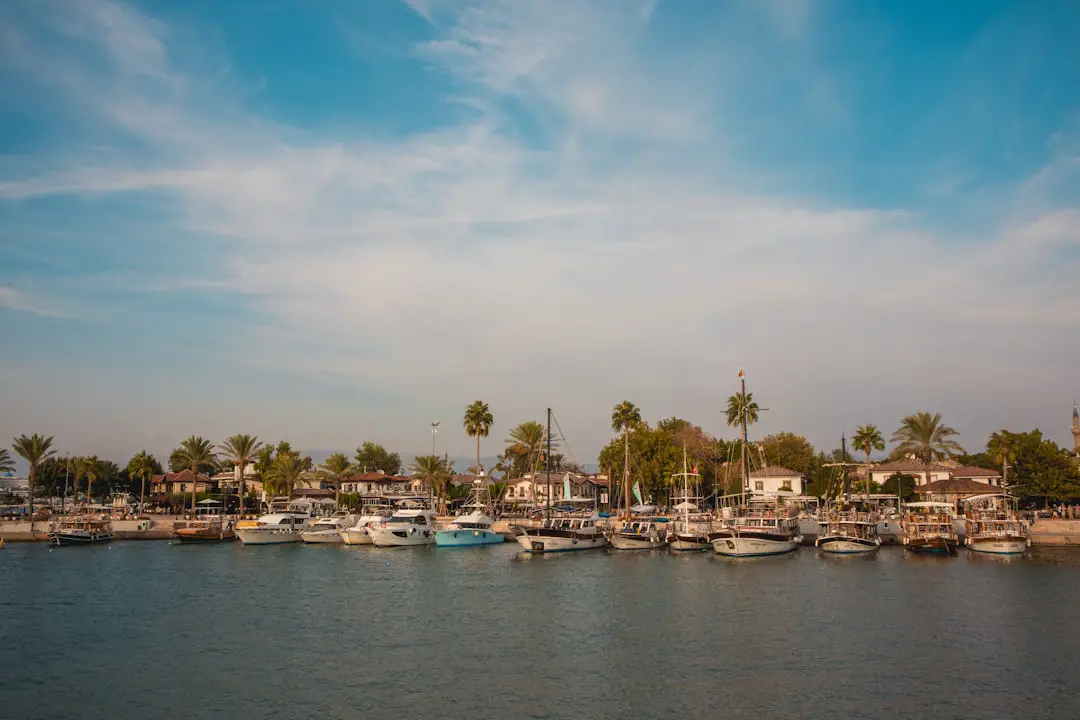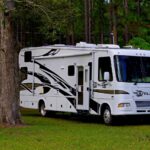
Picture this: You’re cruising down a scenic highway, the open road ahead, and your home on wheels humming smoothly beneath you. But wait — what kind of RV are you driving? Is it a sprawling Class A palace, a nimble Class B camper van, or the family-friendly Class C? Choosing the right RV class can feel like picking a travel soulmate — and the stakes are high. From size and fuel efficiency to interior luxury and price, the differences between Class A, B, and C RV brands are vast and fascinating.
In this comprehensive guide, we’ll unpack 7 crucial differences that every prospective RVer needs to know before making that big purchase. Whether you’re a full-time traveler craving space, a weekend warrior chasing adventure, or a family seeking balance, understanding these distinctions will save you time, money, and headaches. Ready to find out which RV class fits your lifestyle like a glove? Let’s dive in!
Key Takeaways
- Class A RVs offer the ultimate in luxury and space, perfect for full-time living or those who want a residential experience on wheels.
- Class B RVs shine with their compact size, fuel efficiency, and agility — ideal for solo travelers and couples who love exploring hidden gems.
- Class C RVs balance space and maneuverability, making them a favorite for families and groups seeking versatility.
- Fuel efficiency ranges widely: Class B leads with up to 25 mpg, while Class A lags around 8-10 mpg.
- Maintenance and insurance costs vary significantly, with Class A being the priciest to maintain and insure.
- Top brands include Tiffin, Newmar, and Winnebago for Class A; Airstream, Roadtrek, and Mercedes-Benz Sprinter for Class B; and Jayco, Coachmen, and Thor Motor Coach for Class C.
Ready to explore your perfect RV?
- Shop Class A Motorhomes: Tiffin | Newmar | Winnebago
- Shop Class B Camper Vans: Airstream | Roadtrek | Mercedes-Benz Sprinter
- Shop Class C Motorhomes: Jayco | Coachmen | Thor Motor Coach
Dive deeper into the world of RVs and find your perfect match today!
Table of Contents
- Quick Tips and Facts About Class A, B, and C RVs 🚐💡
- The Evolution of Motorhomes: A Brief History of Class A, B, and C RVs 🕰️
- Understanding the Three Main Motorhome Classes: Class A, B, and C Explained 🔍
- Spotting the Difference: How to Identify Class A, B, and C Motorhomes by Shape and Size 👀
- 1. Class A Motorhomes – The Luxurious “Box on Wheels” Experience 🏰
- 2. Class B Motorhomes – The Nimble “Camper Van” for Adventurers on the Go 🚐✨
- 3. Class C Motorhomes – The Versatile “Van Chassis” with Family-Friendly Features 👨👩👧👦
- Comparing Performance: Fuel Efficiency, Driving Experience, and Maneuverability ⚙️⛽
- Interior Comfort and Amenities: What to Expect Inside Class A, B, and C RVs 🛋️🍳
- Price Points and Value: Which Class Offers the Best Bang for Your Buck? 💰💥
- Top Brands and Models for Each Class: Who’s Leading the Pack? 🏆🚍
- Maintenance, Repairs, and Longevity: Keeping Your RV Road-Ready 🔧🛠️
- Choosing the Right Class for Your Lifestyle: Family Trips, Solo Adventures, or Full-Time Living? 🎯
- Insurance and Registration Differences Between Class A, B, and C RVs 🛡️📄
- Environmental Impact: Which Class Is Greener? 🌿♻️
- Real Owner Stories: What RVers Say About Class A, B, and C Experiences 🗣️✨
- Conclusion: Making the Smart Choice Between Class A, B, and C RVs 🏁
- Recommended Links for Further RV Exploration 🔗
- Frequently Asked Questions (FAQ) About Class A, B, and C RVs ❓
- Reference Links and Resources for RV Enthusiasts 📚
Quick Tips and Facts About Class A, B, and C RVs 🚐💡
Before diving into the nitty-gritty, let’s start with a quick overview:
- Class A, B, and C refer to motorized RVs, not travel trailers or fifth wheels. https://campaddict.com/motorhome-classes/
- Size matters! Class A is the largest, followed by Class C, then Class B.
- Your budget plays a key role. Class A RVs are generally the priciest, while Class B RVs can range from affordable to quite luxurious. Class C RVs fall somewhere in between.
- Think about your travel style. Are you a family drawn to the Fifth Wheel RV Manufacturers or a solo adventurer seeking a compact ride?
The Evolution of Motorhomes: A Brief History of Class A, B, and C RVs 🕰️

The RV lifestyle as we know it began to take shape in the early 20th century, with homemade campers and converted vehicles leading the way.
- The 1920s saw the rise of early Class C predecessors, often built on Ford Model T chassis.
- Class B campervans gained traction in the mid-20th century, embracing the spirit of freedom and mobility.
- Class A RVs, with their focus on luxury and space, emerged in the latter half of the century, becoming synonymous with a premium RV experience.
Understanding the Three Main Motorhome Classes: Class A, B, and C Explained 🔍
At RV Brands™, we live and breathe RVs! Here’s our breakdown of the three main classes:
Class A Motorhomes: The Embodiment of Luxury and Space
Imagine cruising down the highway in a home away from home, complete with residential-style amenities. That’s the allure of Class A RVs. These behemoths are known for their spacious interiors, high-end features, and commanding road presence.
Class B Motorhomes: Compact, Nimble, and Ready for Adventure
If you crave spontaneity and the freedom to explore off-the-beaten-path destinations, Class B RVs, or camper vans, might be your perfect match. These agile vehicles are easy to maneuver, fuel-efficient, and offer a surprising amount of comfort and functionality within their compact footprint.
Class C Motorhomes: The Family-Friendly Balance of Space and Maneuverability
Class C RVs strike a balance between the spaciousness of Class A and the agility of Class B. They are a popular choice for families and groups seeking a comfortable RV experience without sacrificing too much on maneuverability.
Spotting the Difference: How to Identify Class A, B, and C Motorhomes by Shape and Size 👀
You can easily distinguish between the three classes based on their distinct profiles:
1. Class A Motorhomes – The Luxurious “Box on Wheels” Experience 🏰
- Shape: Instantly recognizable by their bus-like, boxy shape. They lack a distinct front chassis, giving them a seamless and imposing look.
- Size: The giants of the RV world, ranging from 25 to 45 feet long.
2. Class B Motorhomes – The Nimble “Camper Van” for Adventurers on the Go 🚐✨
- Shape: Most closely resemble a standard van, albeit often with a slightly raised roof to accommodate standing room inside.
- Size: The most compact class, typically measuring between 19 and 27 feet in length.
3. Class C Motorhomes – The Versatile “Van Chassis” with Family-Friendly Features 👨👩👧👦
- Shape: Characterized by the over-cab sleeping area, giving them a distinctive profile. The front chassis resembles a van or truck cab.
- Size: Fall in between Class A and Class B, ranging from 20 to 33 feet long.
Comparing Performance: Fuel Efficiency, Driving Experience, and Maneuverability ⚙️⛽
Fuel Efficiency:
- Class A: As you might expect, these behemoths are the least fuel-efficient, averaging 8-10 mpg. https://crva.ca/what-are-the-differences-between-a-class-a-b-c-motorhome/
- Class B: Take the lead in fuel efficiency, often achieving 18-25 mpg, making them great for budget-conscious travelers.
- Class C: Fall somewhere in the middle, typically getting 10-14 mpg.
Driving Experience:
- Class A: Offers the most bus-like ride, but their size can be intimidating for some drivers, especially in tight spaces.
- Class B: Drives like a familiar van, making it easy to transition for most people.
- Class C: Handles well for their size but requires more care than a Class B, especially in windy conditions.
Maneuverability:
- Class A: Can be challenging to maneuver in urban areas and crowded campgrounds.
- Class B: The easiest to park and maneuver, fitting into standard parking spaces.
- Class C: More maneuverable than Class A but still requires some planning when navigating tight spots.
Interior Comfort and Amenities: What to Expect Inside Class A, B, and C RVs 🛋️🍳
Class A: Residential Living on the Road
- Spacious living areas: Open floor plans, multiple slide-outs, and high ceilings create a sense of spaciousness.
- Full-size kitchens: Residential-style appliances, ample counter space, and plenty of storage for extended trips.
- Luxurious bathrooms: Separate showers and toilets, often with residential-sized fixtures.
- Entertainment options: Large-screen TVs, sound systems, and even fireplaces create a cozy ambiance.
Class B: Compact Comfort and Clever Design
- Efficient use of space: Innovative layouts maximize every inch, often incorporating convertible furniture.
- Basic kitchens: Smaller appliances, limited counter space, but still functional for simple meal preparation.
- Wet baths: Combined toilet and shower units save space.
- Cozy sleeping areas: Convertible beds or fixed beds that often double as seating areas.
Class C: A Balance of Space and Functionality
- Comfortable living spaces: Slide-outs are common, providing extra room when parked.
- Functional kitchens: A step up from Class B, with more counter space and larger appliances.
- Dedicated bathrooms: Separate showers and toilets are common, though often more compact than Class A.
- Sleeping for everyone: Over-cab bunks, convertible sofas, and dinettes provide ample sleeping arrangements.
Price Points and Value: Which Class Offers the Best Bang for Your Buck? 💰💥
Class A: The Premium Price of Luxury
- Highest price tag: Expect to pay a premium for the space, amenities, and luxury features.
- Depreciation: Class A RVs tend to depreciate faster than other classes due to their higher initial cost.
Class B: From Affordable to Luxurious
- Wide price range: Entry-level models can be surprisingly affordable, while high-end, custom-built vans can reach six figures.
- Strong resale value: Their popularity and versatility contribute to strong resale value, especially for well-maintained models.
Class C: The Middle Ground
- Mid-range pricing: More affordable than Class A but pricier than most Class Bs.
- Depreciation varies: Depreciation rates fall between Class A and Class B, depending on factors like mileage and condition.
Top Brands and Models for Each Class: Who’s Leading the Pack? 🏆🚍
At RV Brands™, we’re passionate about connecting you with the perfect RV. Here’s a glimpse at some of the leading brands in each class:
Class A Motorhomes:
- Tiffin Motorhomes: Known for their craftsmanship, luxurious interiors, and robust construction. Tiffin Motorhomes Official Website
- Newmar Corporation: Renowned for their innovative designs, high-end amenities, and attention to detail. Newmar Corporation Official Website
- Winnebago Industries: An iconic American brand with a long history of producing quality RVs across various classes. Winnebago Industries Official Website
Class B Motorhomes:
- Airstream: Synonymous with iconic design, quality craftsmanship, and a loyal following. Airstream Official Website
- Roadtrek: A Canadian company known for its innovative use of space, fuel-efficient designs, and off-grid capabilities. Roadtrek Official Website
- Mercedes-Benz Sprinter Vans: A popular choice for custom conversions, offering a balance of luxury, performance, and reliability. Mercedes-Benz Vans Official Website
Class C Motorhomes:
- Jayco: A well-respected brand offering a wide range of Class C models, from budget-friendly to feature-rich. Jayco Official Website
- Coachmen RV: Known for their value-packed models, family-friendly layouts, and reliable construction. Coachmen RV Official Website
- Thor Motor Coach: One of the largest RV manufacturers in North America, offering a diverse lineup of Class C RVs. Thor Motor Coach Official Website
Maintenance, Repairs, and Longevity: Keeping Your RV Road-Ready 🔧🛠️
Class A:
- Higher maintenance costs: More complex systems and larger components can mean higher repair bills.
- Specialized service centers: May require specialized technicians and parts, which can be more expensive.
Class B:
- Lower maintenance costs: Simpler mechanical systems and smaller size often translate to lower repair costs.
- Easier DIY maintenance: Their compact size and accessibility make them more DIY-friendly for routine tasks.
Class C:
- Moderate maintenance costs: Fall somewhere between Class A and Class B in terms of complexity and repair costs.
- DIY and professional options: Some repairs can be tackled by DIYers, while others may require professional attention.
Choosing the Right Class for Your Lifestyle: Family Trips, Solo Adventures, or Full-Time Living? 🎯
Class A:
- Ideal for: Full-time RVers, large families, and those seeking a luxurious and spacious living experience on the road.
- Consider if: You prioritize space, amenities, and comfort over maneuverability and fuel efficiency.
Class B:
- Ideal for: Solo travelers, couples, and adventurers who value agility, fuel efficiency, and the ability to go off-grid.
- Consider if: You prioritize ease of driving, parking, and exploring over spacious living areas.
Class C:
- Ideal for: Families, groups, and those seeking a balance between space, amenities, and maneuverability.
- Consider if: You need a versatile RV that can accommodate a family or group comfortably while still being relatively easy to drive and park.
Insurance and Registration Differences Between Class A, B, and C RVs 🛡️📄
Class A:
- Higher insurance premiums: Their higher value and greater potential for damage often result in higher insurance costs.
- Specialized coverage: May require specialized RV insurance policies that cover their unique features and higher value.
Class B:
- Lower insurance premiums: Often have lower insurance costs than Class A or C due to their smaller size and lower value.
- Standard auto policies: Some standard auto insurance policies may provide coverage, but it’s essential to check for adequate protection.
Class C:
- Moderate insurance premiums: Insurance costs typically fall between Class A and Class B.
- RV-specific policies: RV-specific insurance policies are generally recommended to ensure adequate coverage.
Environmental Impact: Which Class Is Greener? 🌿♻️
Class A:
- Higher fuel consumption: Their large size and powerful engines contribute to higher fuel consumption and emissions.
- Larger carbon footprint: Generally have a larger environmental impact due to their size and resource consumption.
Class B:
- Fuel efficiency advantage: Their smaller size and more fuel-efficient engines make them a greener option.
- Lower emissions: Produce fewer emissions, especially compared to larger Class A RVs.
Class C:
- Moderate impact: Fall somewhere in between Class A and Class B in terms of fuel efficiency and emissions.
- Eco-friendly options emerging: Manufacturers are increasingly incorporating fuel-saving technologies and sustainable materials into Class C models.
Real Owner Stories: What RVers Say About Class A, B, and C Experiences 🗣️✨
Here at RV Brands™, we believe in the power of real-life experiences. Check out these anecdotes from fellow RV enthusiasts:
- “We chose a Class A for our Full-Time RVing adventures, and it’s been a dream come true! The space is incredible, and we love having all the comforts of home on the road.” – The Nomadic Explorers
- “Our Class B camper van gives us the freedom to explore off-the-beaten-path destinations. It’s amazing how much they pack into such a compact space!” – The Weekend Warriors
- “We opted for a Class C to accommodate our growing family, and it’s been the perfect compromise between space and maneuverability.” – The Adventurous Family
Conclusion: Making the Smart Choice Between Class A, B, and C RVs 🏁

Choosing between Class A, B, and C RVs is like picking your perfect travel companion — each has its own personality, strengths, and quirks.
Class A RVs are the kings of luxury and space, perfect for full-time RVers or those craving a residential experience on wheels. They offer unparalleled comfort but come with higher costs and a steeper learning curve when it comes to driving and maintenance.
Class B RVs are the nimble explorers’ dream — compact, fuel-efficient, and easy to maneuver. They’re ideal for solo travelers or couples who want to hit the road spontaneously without sacrificing essential comforts. However, the trade-off is less living space and storage.
Class C RVs strike a sweet spot for families and groups, blending decent space with manageable driving and price points. They offer versatile floor plans and sleeping arrangements but can be a bit bulky in urban settings.
At RV Brands™, we recommend you start by assessing your lifestyle, travel goals, and budget. If you want luxury and space and don’t mind the size, go Class A. If you want freedom and agility, Class B is your buddy. For a balanced family-friendly option, Class C is the way to go.
Remember, the best RV is the one that fits your unique journey — and now you’re armed with all the insights to make that choice confidently!
Ready to explore the RV world further? Dive into our Full-Time RVing and Luxury RVs guides for even more inspiration.
Recommended Links for Further RV Exploration 🔗
Shop Top Class A Motorhomes:
- Tiffin Motorhomes: RVShare | Camping World | Tiffin Official Website
- Newmar Corporation: RVShare | Camping World | Newmar Official Website
- Winnebago Industries: RVShare | Camping World | Winnebago Official Website
Shop Top Class B Motorhomes:
- Airstream Camper Vans: RVShare | Camping World | Airstream Official Website
- Roadtrek: RVShare | Camping World | Roadtrek Official Website
- Mercedes-Benz Sprinter Vans: RVShare | Mercedes-Benz Vans Official Website
Shop Top Class C Motorhomes:
- Jayco: RVShare | Camping World | Jayco Official Website
- Coachmen RV: RVShare | Camping World | Coachmen Official Website
- Thor Motor Coach: RVShare | Camping World | Thor Official Website
Recommended Books for RV Enthusiasts:
- The RV Handbook: Essential How-to Guide for the RV Owner by Dave Solberg — Amazon
- RV Living: The Ultimate Guide to Full-Time RV Life by Mark J. Polk — Amazon
- The Complete Guide to RVing by Bill and Jan Moeller — Amazon
Frequently Asked Questions (FAQ) About Class A, B, and C RVs ❓

What are the key features of a Class A RV that make it different from other classes?
Class A RVs are built on heavy-duty commercial or bus chassis, offering the largest living space and most luxurious amenities. They typically feature multiple slide-outs, full-size kitchens, spacious bathrooms, and high-end entertainment systems. Their size and construction provide a smooth ride but require more skill to drive and higher maintenance costs. They are ideal for full-time living or travelers who prioritize comfort and space.
Read more about “What Percentage of RVs Are Class A? Insights & Stats for 2025 🚐”
How do Class B and Class C RVs compare in terms of size, amenities, and budget?
Class B RVs are compact camper vans, usually 19-27 feet long, offering basic amenities like a small kitchen, wet bath, and convertible sleeping areas. They excel in fuel efficiency and maneuverability but have limited living space and storage. Class C RVs are mid-sized (20-33 feet), featuring over-cab sleeping areas, more spacious kitchens and bathrooms, and multiple sleeping options. Budget-wise, Class Bs can range from affordable to luxury, while Class Cs generally fall in the mid-price range.
What are the advantages and disadvantages of owning a Class A versus a Class C RV?
Advantages of Class A: Superior space, luxury, and residential features; ideal for long-term or full-time RV living.
Disadvantages of Class A: Higher purchase price, fuel costs, and maintenance; more challenging to drive and park.
Advantages of Class C: More affordable, easier to drive than Class A, family-friendly layouts, and towing capability.
Disadvantages of Class C: Less luxurious and spacious than Class A; still larger than Class B, which can limit maneuverability.
Can I tow a car behind a Class C RV, and what are the considerations for doing so?
Yes, most Class C RVs are equipped with towing hitches and can tow a car, small boat, or trailer. When towing, consider the RV’s towing capacity, hitch type, and the weight of the towed vehicle. Proper braking systems and safety chains are essential. Towing adds complexity to driving and parking, so practice and planning are crucial.
How do the floor plans and interior designs of Class A, B, and C RVs differ from one another?
Class A RVs often feature open-concept floor plans with multiple slide-outs, residential kitchens, separate bedrooms, and full bathrooms. Class B RVs maximize compact space with multifunctional furniture, wet baths, and minimal slide-outs. Class C RVs offer versatile floor plans with over-cab bunks, slide-outs, dedicated kitchens, and bathrooms, balancing space and functionality.
What are the typical price ranges for new and used Class A, B, and C RVs on the market today?
- Class A: New models start just under $100,000 and can exceed $1 million for luxury editions. Used prices vary widely based on age and condition.
- Class B: New models range from under $100,000 to over $250,000 for premium builds. Used camper vans hold value well due to demand.
- Class C: New Class C RVs typically range from $80,000 to $300,000. Used prices depend on mileage and features.
Are there any specific RV brands that specialize in one class over the others, and what are their unique offerings?
Yes! For example:
- Tiffin and Newmar specialize in Class A luxury motorhomes with high-end craftsmanship and innovative features.
- Airstream and Roadtrek focus on Class B camper vans with iconic designs and efficient layouts.
- Jayco and Thor Motor Coach offer a broad range of Class C models, emphasizing family-friendly floor plans and value.
Reference Links and Resources for RV Enthusiasts 📚
- CampAddict: Motorhome Classes Explained
- Canadian RV Association: Differences Between Class A, B, and C
- Transwest: Comparing Class A RVs vs. Class B vs. Class C RVs
- Tiffin Motorhomes Official Website
- Newmar Corporation Official Website
- Winnebago Industries Official Website
- Airstream Official Website
- Roadtrek Official Website
- Mercedes-Benz Vans Official Website
- Jayco Official Website
- Coachmen RV Official Website
- Thor Motor Coach Official Website
Ready to hit the road with confidence? Your perfect RV adventure awaits! 🚐✨




